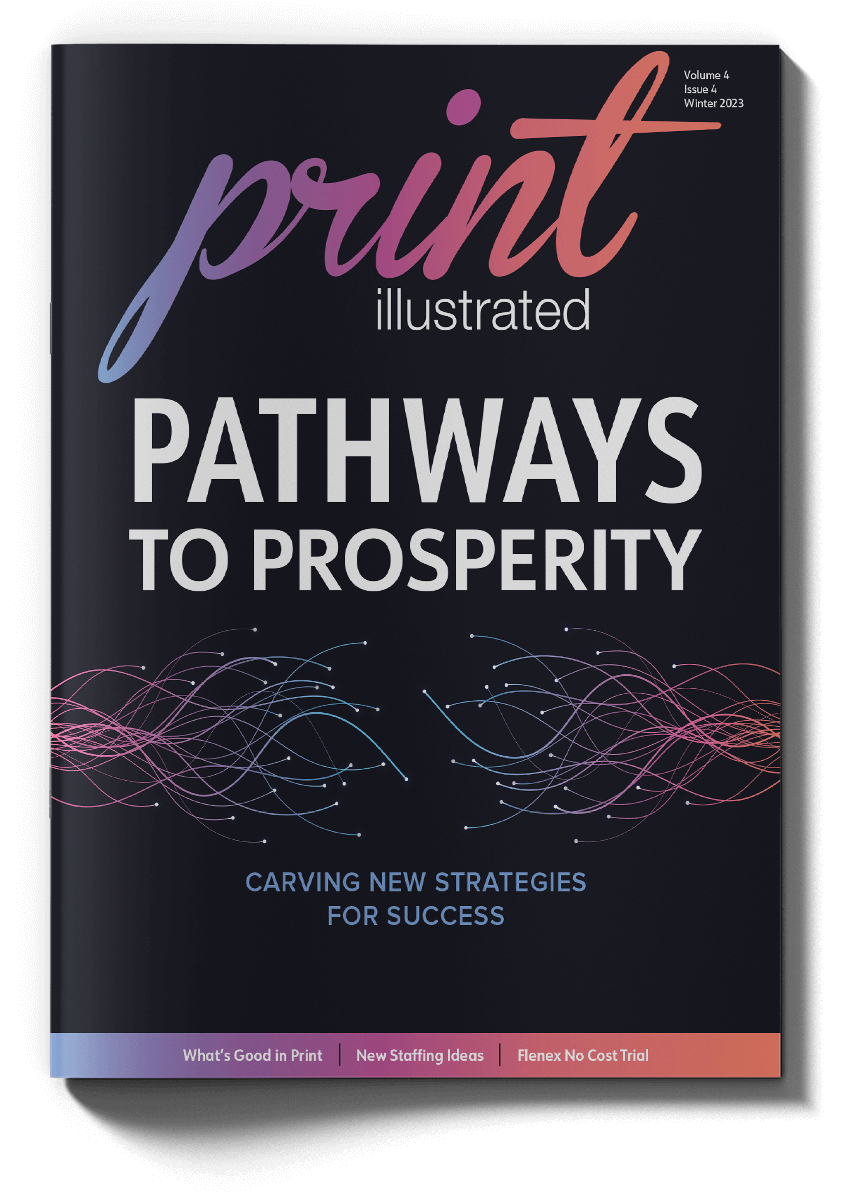Approximately once a day, The Standard Group’s mid-level manager meets with an employee, his manager and an executive to get a better feeling of their jobs, their concerns and any ideas they have for improvement. At its core, the GEMBA meetings, as they are called, are part of a Japanese philosophy called Lean Kaizen. For clarity’s sake, Lean is a methodology that eliminates waste and boosts efficiency, while Kaizen means continuous improvement.
The Standard Group CMO Thanh Nugyen says the GEMBA meetings are an important management strategy for getting to the gritty of what’s happening at every level of the company. Standard also utilizes a program where employees can offer an OI, or Opportunity for Improvement, which challenges employees to find something that bugs them and offer ideas to improve. For example, one employee hated being unable to see if any of the printer’s conference rooms were in use, so he created an OI to install tablets outside each room. Now, employees can see at a glance if a conference room is being used, enabling them to instantly book an open room from the tablet.
“We are big believers in continuous learning and reskilling,” Thanh says. “Employees are one of our most valuable assets—an educated employee is happier and more functional. We are a lean six-sigma manufacturing company with a continuous improvement system to improve our procedures and remove waste from our production process. All of our employees are Six Sigma White Belt certified, and over 32% are voluntarily Six Sigma Yellow Belt certified. Another 6% of our team is Six Sigma Green Belt certified, while our entire executive team is Six Sigma Champion certified. As a result, we have one of the lowest rework percentages in the industry, less than 0.005%.”
“I think the right culture combined with a willing attitude are the keys to success in reskilling. We are blessed to have a team that seeks opportunities to do more for our clients and company.”
– Anthony Narducci, CEO, O’Neil Print
The innovative practices The Standard Press uses to strengthen the core of its company are a part of a growing number of initiatives today’s printers are exploring. The efforts are not only for keeping current staff immersed in the game, but also to attract new workers. Simply put, like many similar industries are experiencing, staffing has emerged as a predominant challenge for printers.
“The printing industry has been forced to evolve in terms of staffing and technology,” Thanh says. “Our employees are beginning to age out, and we need to find ways to attract and recruit younger adults. We need to convince them that printing is a viable trade to build a career. Print equipment has vastly evolved in technology to become more digital, and even inkjet and newer folders and bindery equipment are faster and more efficient. Technological advancements continue to incorporate digital, social, and augmented reality into traditional direct mail to make it more engaging and effective.”
Part of Standard’s efforts to recruit the next generation is based on the partnerships it is creating with metro area high schools, tech schools, trade schools and local colleges. The Standard Group team provides regular tours of the facility, and has created internships and job shadow opportunities.The Standard team provides regular tours of the facility, and has created internships and job shadow opportunities. “We began introducing students to our various departments and services and find that they often surprise us with what they find interesting,” Thanh says. “Some gravitated to the big offset press, some wanted to work in the digital department, while others wanted to work in the prep department, as a project manager or in mailing.”

Into the great wide open
When Anthony Narducci peeks out into the current state of today’s commercial print industry, he sees a changing landscape ripe with opportunity. The changes, among other things, include a shift in traditional staffing positions, from experienced skilled equipment operators to a team more versed in multiple areas. This cross-training has helped fill open positions.
As part of preparing for this shift, O’Neil Print also has made a major investment in automation over the past four years. “Our team is eager to learn different skills and functions within both our operations and client services,” says Narducci, CEO of the Phoenix-based printer. “I think the right culture combined with a willing attitude are the keys to success in reskilling. We are blessed to have a team that seeks opportunities to do more for our clients and company. We certainly let them know they are appreciated and provide regular channels for open communication and events to build community with our team.”
With the next generation in line for opportunities, O’Neil is embracing the mindset of wooing all comers. “I think we need to feel and act like a company that isn’t dripping with legacy thought processes and provide an engaging environment for younger team members to be attracted to our industry/companies. The tools we use, the words we use, the vision we share all make a difference in the attractiveness to both younger and legacy employees. I think we have a good start on this and really look forward to continually improving on our roadmap to successfully navigate any changes along this journey.”
“We began introducing students to our various departments and services and find that they often surprise us with what they find interesting.”
– Thanh Nugyen, CMO Standard Press
In today’s rapidly evolving landscape, preparing for the next generation equates to not just upgrading equipment, but also fostering an environment that encourages creativity, innovation and the skill sets needed to grow. Equipping your workforce with the necessary training and tools will not only enhance productivity, but also position printers for the road ahead.
“Being able to produce more with fewer employees is a trend all industries embrace, including ordering kiosks and mobile ordering for restaurants,” Thanh says. “We must grasp and incorporate artificial intelligence (AI) and robotics into our production to make us more efficient and competitive. We are already doing that now with the brand and marketing portals we create for our clients. Such portal technology eliminates the need to gather print specifications, manually enter a job, create a job jacket or produce a PDF. It’s only natural to start bringing more technology to the production end of our business. Our staff would then concentrate more on selling, strategy, creativity, programming and client service.”
As the commercial print industry and its workforce evolve, the future comes down to understanding, adapting and investing in workforce development and technology. The commitment to staying on top will ultimately define your sustainability for the road ahead.

